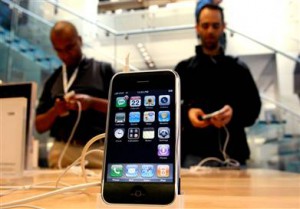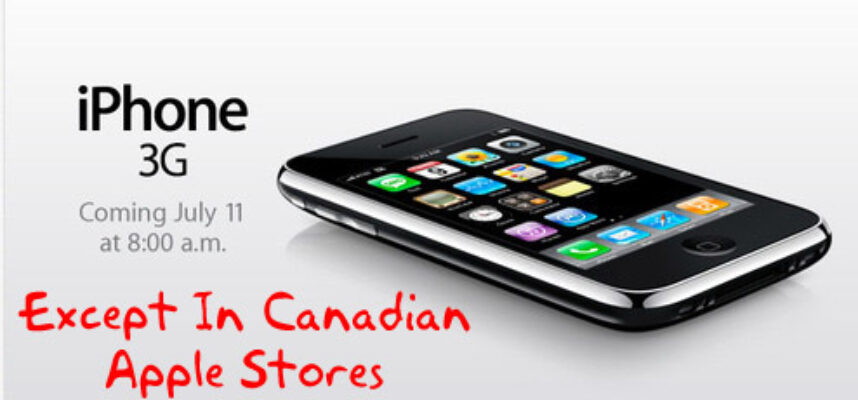10 Jul 2008
0 CommentsRogers Climbdown – Egg on Face Purely from Rogers Shooting Themselves in the Foot
Yesterday’s climbdown by Rogers on 3G iPhone (in fact, quicly extended to all smart phones) data pricing was nothing short of spectacular. Since the weekend, I’ve watched as many of my colleagues in the Blogosphere have pushed a campaign of long term customer lobbying over the goal line. Clearly, in addition to influential bloggers, Apple is the industry titan that has been able to unclog an uncompetitive wireless market in Canada unlike any other company (or government) so far.
The story has been well covered, with a good selection of the chronology, below:
- Daniel Smith/Smithereens Blog: “Apple Flips Rogers a Bird A Week Before Canadian iPhone Launch? (Plausible Rumor)”
- Mark Evans: “Is the iPhone a PR Fiasco for Rogers” and “Who at Rogers Blew the iPhone”?
- Jim Courtney in Skype Journal: “Score One for the Blogosphere – Immense PR Turmoil – Rogers Caves”
- IT In Canada: “Did Rogers Try the Patience of Jobs?”
However, apart from the obvious power that an internet-engaged base of consumers now has over even the largest companies and apart from a major victory for grassroots campaigning, there is an even bigger lesson to be learned from this.
 In a blog post back in April “Early Adopters versus Business Models: Shooting Yourself in the Foot?”, I stressed that companies who fail to engage early adopters and keep them happy risk both sabotaging an emerging market, but also creating long term ill will that is almost impossible to reverse. My personal hypothesis is that that the ratio of the cost to reverse grassroots consumer dissatisfaction (bad will) to delivering a message when the company brand is seen as consumer friendly (good will), may well be as high as 1000 to 1.
In a blog post back in April “Early Adopters versus Business Models: Shooting Yourself in the Foot?”, I stressed that companies who fail to engage early adopters and keep them happy risk both sabotaging an emerging market, but also creating long term ill will that is almost impossible to reverse. My personal hypothesis is that that the ratio of the cost to reverse grassroots consumer dissatisfaction (bad will) to delivering a message when the company brand is seen as consumer friendly (good will), may well be as high as 1000 to 1.
While we must await the long term customer fallout from this major misstep and climbdown by Rogers, I suspect that Rogers has suffered a significant long term liability on its balance sheet.
Again, it is clear the companies ignore early adopters at their peril.



 No, not like this!
No, not like this!
30 Jul 2008
0 CommentsRunTheDream in Elora: Social Enterprise Reaches 3400 / 8500 km.
A little over 4 months ago we first wrote about an astonishing social enterprise, Jonathan Howard (see photo) and his Run The Dream (RTD).
To refresh your memory, take a look at our 22 March, 2008 post by clicking here: With amazing youthful enthusiasm, having Just turned 25 today, Jonathan Howard ran into Elora to a welcome by a Michael Chong, MP, Mayor Joanne Ross-Zuj, a number of parents who live daily with Autism Spectrum Disorders (ASD) and a good contingent of local supporters. It goes without saying people were inspired and he was very warmly greeted.
It’s really interesting how things that start slowly eventually snowball. There are always challenges and false starts in any truly entrepreneurial enterprise. The snowballing of viral propagation is famous in the world of web startups. Jonathan has witnessed a similar effect with Run The Dream. One shining example of that is Terry Robinson (see photo). Terry, a co-worker at Ontario Public Service and an accomplished two-time Para-Olympian (Seoul and Barcelona), was so inspired by Jonathan’s social vision to commit to a leave of absence from his job to accompany Jonathan by wheelchair from Ottawa to Winnipeg. That’s a 3 month and 3000 kms of dedicated trek. What a team they make as they average a marathon a day, day in, day out.
Jonathan and Terry should be an inspiration to us all. RTD is managed by a core team of about a dozen (effectively full time) volunteers, augmented by literally hundreds of local grassroots volunteers, with Jonathan being the notional CEO (or should I say, Chief Running Officer?). As a startup social enterprise, RTD has an impressive year one business plan. The two main CSFs:
are ambitious goals for any startup. How many technology startups come close to that in year one?
When we filter investment prospects at Verdexus, we like to think that 80% of the investment decision is centred around the team. As a result, we spend much time getting the measure of founding team entrepreneurs. For a social enterprise, the same is true, in spades. With a vision and an execution track record that Jonathan and Run The Dream has so far, have you any doubt that investors will back Jonathan and his team?
And, guess what? You can to. Help Jonathan and his team meet their goal by donating online at the Run The Dream website.